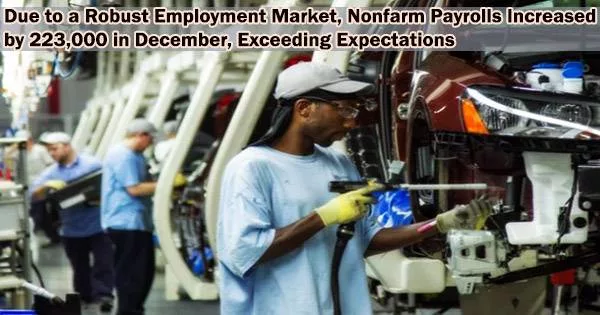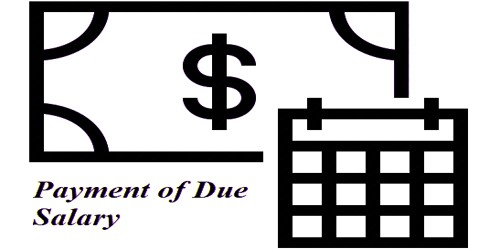Nonfarm payrolls are a key economic indicator that measures the number of people working in the U.S. in non-agricultural jobs. A rise in nonfarm payrolls typically indicates that the economy is growing and that more people are finding employment. The release of the nonfarm payrolls report is closely watched by economists and investors, as it can have a significant impact on financial markets.
Although payroll growth slowed in December, it was still more than anticipated, showing that the labor market is still robust despite efforts by the Federal Reserve to curb economic growth.
The rise in nonfarm payrolls for the month was 223,000, exceeding the Dow Jones estimate of 200,000, while the unemployment rate decreased to 3.5%, 0.2 percentage points below expectations. The job growth marked a small decrease from the 256,000 gain in November, which was revised down 7,000 from the initial estimate.
The wage growth was lower than anticipated, suggesting that inflation pressures may be easing. The average hourly wage climbed by 4.6% from a year ago and by 0.3% for the month. The respective estimates were for growth of 0.4% and 5%.
By sector, leisure and hospitality led with 67,000 added jobs, followed by health care (55,000), construction (28,000) and social assistance (20,000).
Following the report, stock market futures increased as investors sought indications that the job market was cooling and bringing inflation down as well.
“From the market’s perspective, the main thing they’re responding to is the softer average hourly earnings number,” said Drew Matus, chief market strategist at MetLife Investment Management. “People are turning this into a one-trick pony, and that one trick is whether this is inflationary or not inflationary. The unemployment rate doesn’t matter much if average hourly earnings continue to soften.”
Despite repeated attempts by the Fed to slow the economy in general and the labor market in particular, the relative strength in job growth continues. The central bank raised its benchmark interest rate seven times in 2022 for a total of 4.25 percentage points, with more increases likely on the way.
Primarily, the Fed is looking to bridge a gap between demand and supply. As of November, there were about 1.7 job openings for every available worker, an imbalance that has held steady despite the Fed’s rate hikes. The strong demand has pushed wages higher, though they mostly haven’t kept up with inflation.
December’s wage data, though, could provide some encouragement that the Fed’s efforts are impacting demand.
“There’s some indication that things are moving in the right direction. We’re seeing the impact of the blunt tools of monetary policy take effect,” said Mike Loewengart, head of model portfolio construction for Morgan Stanley’s Global Investment Office. “I don’t think this is going to sway the Fed from a few additional raises going forward, but it no doubt is encouraging to see a moderation in wages.”
The drop in the unemployment rate came as the labor force participation rate edged higher to 62.3%, still a full percentage point below where it was in February 2020, the month before the Covid-19 pandemic hit.
In a data set dating back to 1994, a more comprehensive measure of unemployment that accounts for discouraged workers and those who hold part-time jobs for financial reasons also decreased, falling to 6.5%, its lowest-ever level. The headline unemployment rate is tied for the lowest since 1969.
The household count of employment, used to calculate the unemployment rate, showed a huge gain for the month, rising 717,000. Economists have been watching the household survey, which has generally been lagging the establishment count.
The U.S. heads into 2023 with most economists expecting at least a shallow recession, the result of Fed policy tightening aimed at tamping down inflation still running near its highest level since the early 1980s. However, the economy closed 2022 on a strong note, with GDP growth tracking at a 3.8% rate, according to the Atlanta Fed.
The most recent inflation readings are encouraging, but the Fed will need to continue to make progress before it can stop raising interest rates. This was acknowledged by Fed members at their most recent meeting.
As things stand, markets are largely expecting the Fed to increase rates another quarter-percentage point at its next meeting, which concludes Feb. 1.
















